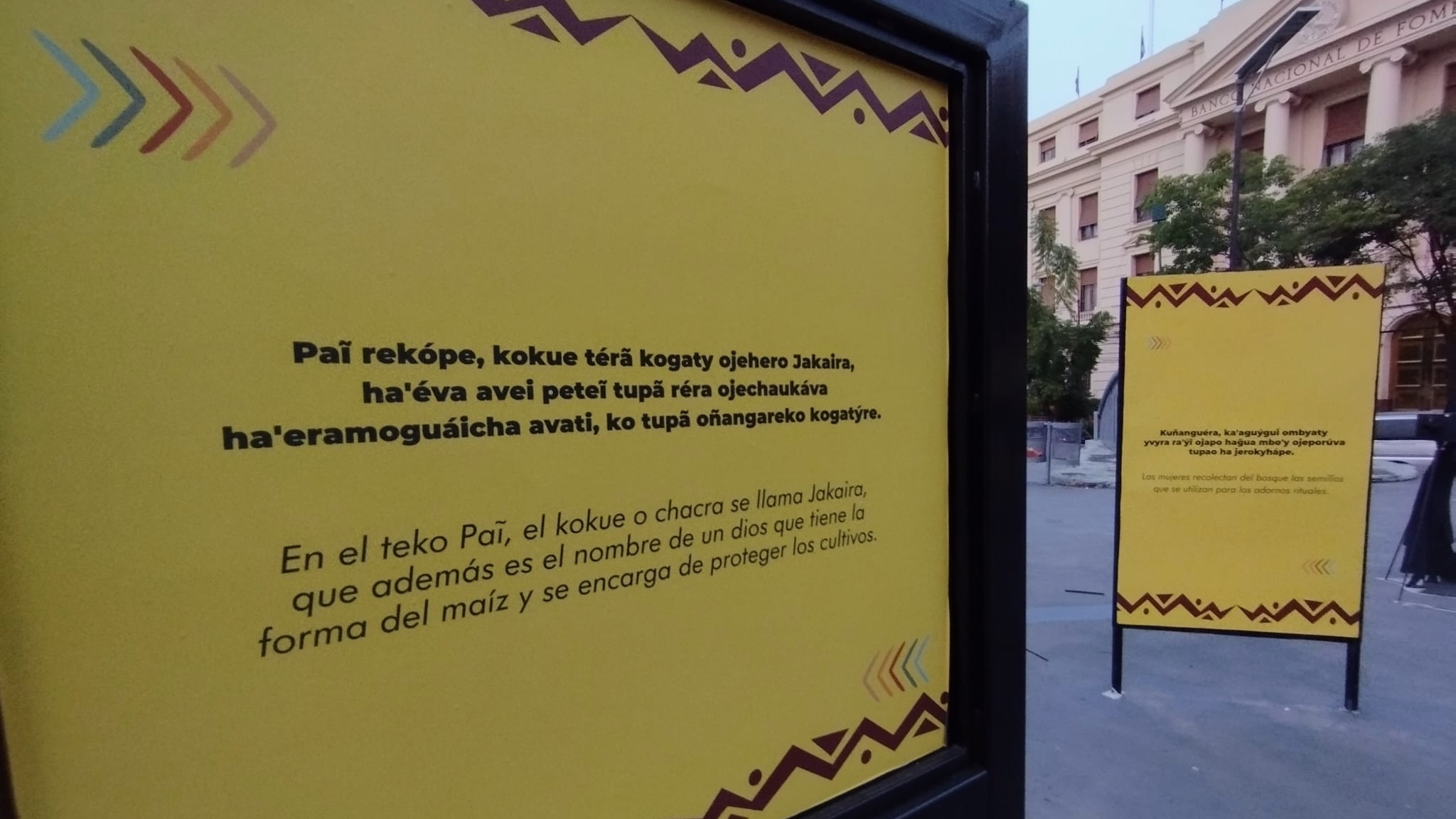Tomas Zayas, who lives in the Paraguayan countryside, spoke only the Indigenous Guaraní language until he was 22 years old.
Later, he started to speak Spanish to be better prepared as a community leader. But Guaraní has remained his main language.
“For me, Guaraní is identity,” said Zayas, a longtime campesino leader with the Alto Parana Small Farmers Association. “It’s happiness. It’s beauty. Because a joke in Spanish isn’t funny at all.”
The Guaraní language, along with its many dialects, comes from the Indigenous Guaraní people who have lived in this region since long before the Spanish conquest.

Today, nearly 300,000 Indigenous Guaraní still live in Paraguay, Brazil, Bolivia and Argentina. In some of these countries, their language has influenced Portuguese and Spanish.
But in Paraguay, Guaraní is spoken as an official language alongside Spanish. Most Paraguayans speak Guaraní or a mixture of Spanish and Guaraní as their first language, whether they are of Indigenous descent or not.
Although there are several theories about how Paraguayans have been able to preserve their Indigenous language, one that stands out focuses on the Triple Alliance War of the 1860s.

Most of Paraguay’s male population was killed after Brazil, Argentina and Uruguay invaded the country.
“As a question of survival, the women who were left would only speak Guaraní,” Zayas said. “They passed it on to their children.”
Guaraní has long been a language of resistance.
Under the dictatorship of Alfredo Stroessner, which lasted from the 1950s until the late 1980s, Guaraní was banned in Paraguay. It has also been stigmatized as a language of the poor.

But many Paraguayans say that Guaraní is a language of metaphor and beauty.
Rita Álvarez has been selling handicrafts and homemade jewelry on the streets of Asunción, Paraguay’s capital, for more than 40 years.
“For me, it’s the sweetest language,” she said. “Because you can say with one word in Guaraní what you would need 10 to say in Spanish.”
She said that most of her customers in the city speak a combination of Guaraní with Spanish, or jopara, which means “mixture” in Guaraní.

Julio Benegas, a Paraguayan journalist and novelist in his 50s, said that many of those variations are generational.
“Those who are younger speak one phrase in Spanish and the next in Guaraní. They combine the words. ’Hey, how’s it going? Chill, no problem,’” he said, bouncing back and forth between the two languages.
Blanca Estela González is a retired elementary schoolteacher who now teaches Guaraní at IDIPAR Language School in Asunción.
Gonzalez said that foreigners often pick up Guaraní rather quickly, because, unlike Spanish, there are only three types of verb conjugations: past, present and future.

And Gonzalez said the language has received a boost in recent decades.
“Now, it’s an official language,” she said. “And half of the lessons at the public schools are taught in Guaraní.”
She said that there’s still a long way to go. It needs to be embraced and promoted even more. But she is hopeful for the future.

